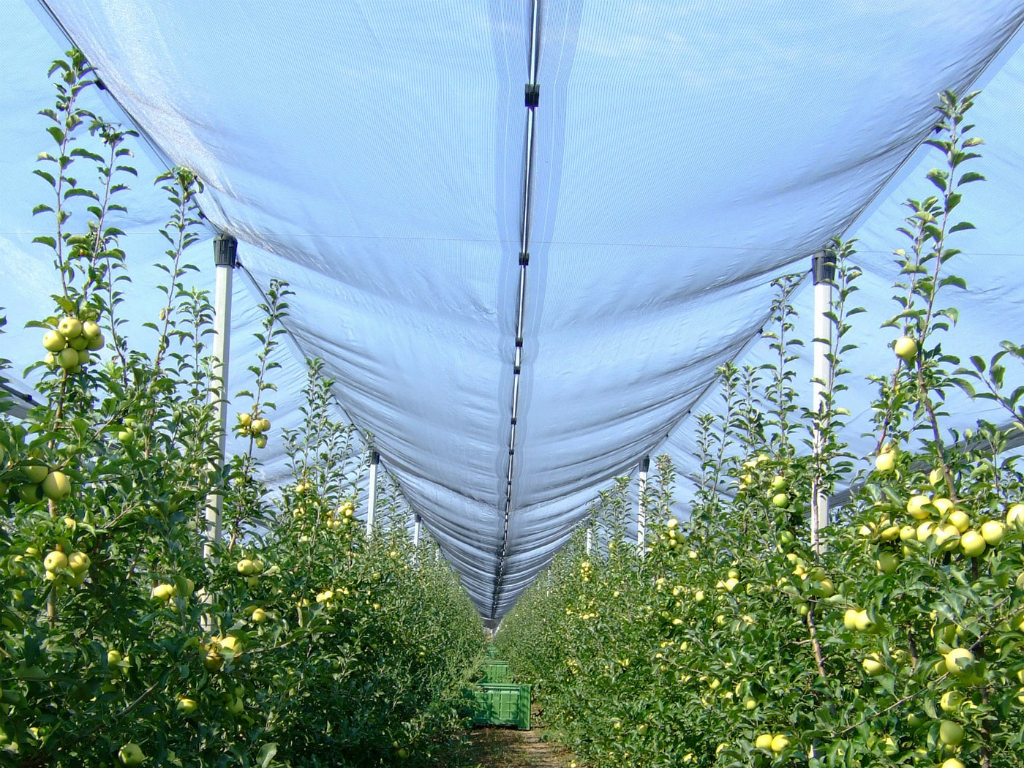Hail Cloth
Protecting your crops is of utmost importance. One thing that can wreak havoc on them is a hail storm. Hail stones can damage crops by bruising, cutting, and breaking branches, and can even destroy an entire harvest. Enter hail cloth, a solution to this problem that farmers and gardeners alike swear by.
The Pain Points
Without adequate protection, a hail storm can cause significant crop damage and result in financial loss for farmers. Even small hail stones can cause harm to delicate crops, making it important to have a protective measure in place. But traditional methods of protecting crops, such as constructing shelters or using umbrellas, can be expensive or impractical.
What is Hail Cloth?
Hail cloth, also known as hail netting or anti-hail netting, is a light but durable mesh fabric made from high-density polyethylene (HDPE). It is designed to protect crops from hail and other types of damage caused by harsh weather conditions such as wind, rain, and sun. Hail cloth is commonly used in agriculture and horticulture, and is available in different sizes and colors depending on the user's needs.
Main Points
Hail cloth is an effective and affordable way to protect crops from hail and other harsh weather conditions. It is made from HDPE, a durable and lightweight material that can withstand various weather conditions. Hail cloth is easy to install and remove, making it a popular choice among farmers and gardeners. Its use can result in significant savings by preventing damage to crops and avoiding the need for costly repairs or replacements.
My Personal Experience with Hail Cloth
As a farmer, I have had my share of crop damage from hail storms. It can be frustrating to put in all that hard work only to have it destroyed in minutes by a storm. That's why I decided to invest in hail cloth. And boy, have I seen the benefits. Not only does it protect my crops, but it also keeps out pest birds and reduces heat stress on my plants. Overall, hail cloth has been a game-changer for me and my farm.
Hail Cloth Target: Horticulture and Agriculture
Hail cloth is primarily used in horticulture and agriculture to protect crops from hail damage and other weather-related issues. This can include fruit trees, vegetables, grains, and flowers. The purpose of hail cloth is to provide a protective covering for plants, while still allowing air and water to circulate. This ensures that the crops are healthy and productive, even in harsh weather conditions.
Hail Cloth for Home Gardens
Even if you're not a commercial farmer, hail cloth can still be beneficial for your home garden. Using hail cloth can protect your delicate plants from hail damage, as well as other weather-related issues. Additionally, it can keep out pesky birds, insects, and other animals that might be feeding on your crops. Hail cloth is easy to use and affordable, making it a practical solution for any home garden.
Using Hail Cloth for Pest Control
In addition to protecting crops from weather damage, hail cloth can also be used to control pests. Birds and insects can be a major issue for gardeners and farmers, often causing extensive damage to crops. Hail cloth can act as a barrier, preventing birds and insects from accessing your crops. This can reduce the need for pesticides, making it an eco-friendly solution.
The Benefits of Using HDPE in Hail Cloth
HDPE is a popular material used in hail cloth because of its durability and resistance to environmental factors such as UV rays, heat, and cold. It is a lightweight material that is easy to transport and install, making it an ideal material for hail cloth. Additionally, HDPE is eco-friendly and can be recycled, making it a sustainable option for farmers and gardeners.
Hail Cloth Q&A
Q: How is hail cloth installed?
A: Hail cloth can be installed vertically or horizontally using poles, wires, or clips. It can also be draped over plants or crops and tied down to secure it in place.
Q: Is hail cloth reusable?
A: Yes, hail cloth is reusable for multiple seasons and can last for several years with proper maintenance.
Q: Can hail cloth be used indoors?
A: Yes, hail cloth can be used indoors to protect crops from harsh indoor lighting and temperature changes.
Q: Does hail cloth only protect against hail?
A: No, hail cloth can also protect crops from other weather-related damage such as wind, rain, and sun.
Conclusion of Hail Cloth
Hail cloth is an affordable and practical solution for farmers and gardeners who want to protect their crops from hail and other weather-related damage. It is made from durable and lightweight HDPE material, making it easy to install and remove. Hail cloth is used in horticulture and agriculture and can also be an eco-friendly option for home gardens. Additionally, hail cloth can be used for pest control and is a sustainable option for protecting crops.
Gallery
How Hail Cloth Works - YouTube

Photo Credit by: bing.com /
High Density Polyethylene Hail Netting Prevent Hails And Protect The

Photo Credit by: bing.com / hail netting anti garden bird polyethylene density high prevent protection protect orchard mesh hdpe hails crops tree blueberry apple
CO-Horts: The Benefits Of Hail Cloth

Photo Credit by: bing.com / hail raised horts
ANTIGRANDINE - Woven Anti Hail Mesh Made Of HDPE Reinforced Monofilame

Photo Credit by: bing.com / hail netting anti orchard apple cherry crabapple trees protection weaving leno
CO-Horts: The Benefits Of Hail Cloth

Photo Credit by: bing.com / hail horts